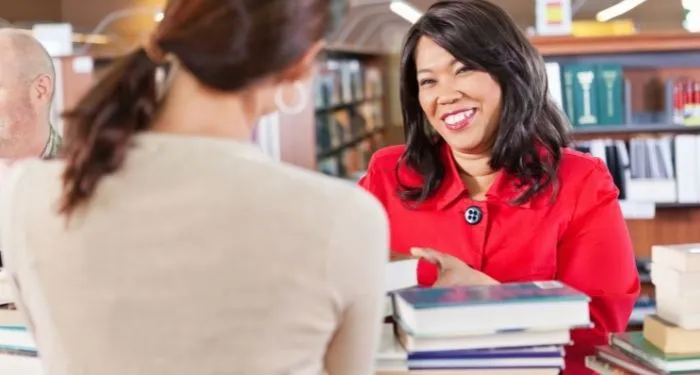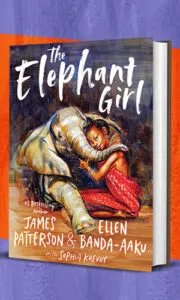
Back to School Inspiration for Librarians
It’s back to school season! Notebooks full of blank pages, the smell of freshly sharpened pencils, new sneakers, empty halls waiting to be filled with students again. For me, and many educators, the new year starts in the rest of the world’s Quarter 3, not in January. The idea of going back to school has always given me butterflies, and one of the joys of working in education is the thrill and promise of a new school year. There are endless possibilities! Opportunities for change! Hope for the future! There are new students and teachers to meet.
Alright, I get that my enthusiasm might not be the same back to school feeling that other educators are experiencing. Many people are burnt out, even after summer break. Maybe because of summer break. Perhaps the idea of getting back in the school building with looming faculty meetings, training, and professional development are making you less than excited. Or maybe you’re like the writer side of me and the blank page (or empty library) is daunting. Where do you even start when there is so much to do? Sometimes the idea of endless possibilities makes all possibilities feel impossible. It’s time to narrow our focus. Here are some ways to kickstart your school year, some ideas to get you started. Sometimes when the blank page is staring back at you, all you need is a little prompt to get the creative ideas flowing.
Physically Change the Space
Changing the physical set up of your library space is a relatively easy way to make a big impact. So often we think about library spaces as static. These shelves aren’t on wheels! They aren’t going anywhere. I thought the same thing in my library. Turns out the shelves weren’t bolted to the floor and could be moved, disassembled, reassembled, and filled with books again in another area. The shelves may seem immovable because they are so heavy, but make sure: even ones lining walls are often not secured down. Think about what is eye catching to people as they first enter the library. Some of the underutilized shelving units can be moved to the entryway for book displays.
Thinking on a smaller physical scale can also spark information. Do you have tables parallel to a whiteboard or projector screen? Try turning them perpendicular and see how that feels. This way, all the students at the tables can see the board without half of them having to turn all the way around while the other half sit comfortably. It keeps everyone more engaged. Have a cozy reading nook? Move some of the seats or rugs around to give it a fresh feel. Is there something you can paint? Ask an art teacher to collaborate with you on having students paint a mural in the library or on the circulation desk. Put colored bulletin board paper behind the shelves to delineate different subjects or genres.
Is there an outlier table that keeps getting shoved in a corner? Move it to a high traffic area and fill it with a simple display to catch patrons’ attention. Think about the flow of traffic and what books, items, or activities you wish got more attention. Moving them to a more prominent place might be just what that BookTok display really needs to get the traction it needs to take off.
Set Up New Centers
Similar to physical space, setting up new centers in a library can add interest and draw students in. That cozy reading nook you created last year, and that I mentioned earlier, would also make a great puzzle place if you add a low table. Don’t have an extra table laying around? Put some poster board or bulletin board paper down for students to dump puzzle pieces out for assembly.
That unused classroom or teaching space because it doesn’t have a projector can be turned into a game room. One center for board games. One center for word games. Another center for card games. Lure the students in with games and keep them there with books about games like Slay by Brittany Morris, The Gauntlet by Karuna Riazi, Ace of Spades by Faridah Àbíké-Íyímídé, or In Real Life by Cory Doctorow and Jen Wang.
A LEGO center is another popular, inexpensive option. Ask teachers and parents to donate LEGOs they no longer want. Go on a buy nothing group or another online trading platform and ask for them. LEGOs are one of those things that accumulate quickly in a house and many people are looking for a good place to donate them. You could even build a LEGO wall where students’ architecture can also be wall art.
Decorate!
Do not underestimate the power of decorating. Printing out inspirational back to school quotes or quotes from authors about learning, reading, and education and putting them up in places where people linger adds new life to a space. In my library, there’s an unsightly electrical box right over one of the most used printers. It’s a prime spot for seasonal or monthly inspirational quotes or library puns. Often I’ve had teachers or students come to the circulation desk after their printing job is completed to talk to me about the quote, creating more opportunities for relationship building.
We all know that making creative, engaging, or funny displays can be a way to circulate more books, but they can also be a way to inspire ourselves. A simple search for a display I have in mind can leave me inspired by other librarians’ work and ignite ideas of my own. Last year, I found a whiteboard on wheels not being used in the reference room and rolled it right outside the library doors where I added lyrics from pop songs I had changed to be about books and reading.
Add Music
At the end of last year, my co-librarian and I pooled our PTSA money to buy a speaker on wheels. Now we have music playing in the library almost every day, and it immediately changes the atmosphere. We started with lofi study beats during the quiet hours in the morning and move to decades playlists in the afternoon. Once people realized that they hadn’t accidentally disconnected their earbuds and knew the music was coming from us, we started getting requests. I want to encourage students to take ownership in the library in any way I can. Letting them put on their favorite (school appropriate) playlists is a fast and effective way to establish a sense of community. It’s a vibe, as the kids say.
Get Interactive
Make interactive Google slides with book recommendations (looking at you Mrs. Marchioli and Mrs. Morrison!). Here’s one they did for Asian American Pacific Islander Heritage Month. It’s like a Choose Your Own Adventure for book recommendations. Users get to choose whether they want fiction or nonfiction, then narrow it down further from historical, fantasy, or realistic. Or if they choose nonfiction, they can choose from a notable people or events and history category. From there books are recommended with pictures of the covers students can click on which lead them to blurbs about each one. Even if you don’t have a fancy pants interactive touchscreen board, this can work well on computers or iPads. It’s a great tool for visiting classrooms or posting on a school community page.
I hope that some of these ideas get your creative cogs turning. Please reach out on Twitter to let me know if you tried any of these or if you have any ideas of your own you want to share! One of my favorite things about being in the librarian community is how generous everyone is with their willingness to collaborate. If you’re interested in reading more about libraries, you should read about how lost library books found their way home or how one rioter grew as a school librarian post shut down world.














